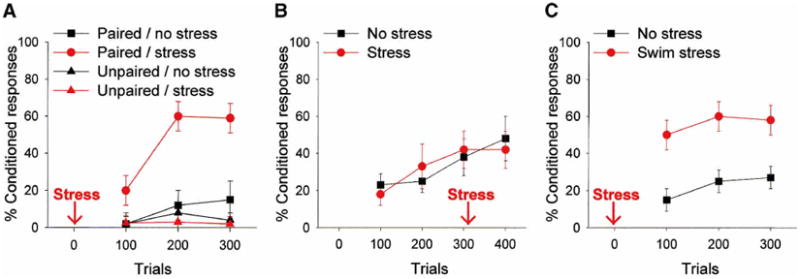Figure 2.

(A) In this experiment, male rats were exposed to an acute stressful event of brief intermittent tail shocks, and 24 hr later, trained on the classically conditioned eyeblink response with paired stimuli consisting of a white noise conditioned stimulus (CS) and eyelid stimulation as the unconditioned stimulus (US) (Shors et al. 1992). Additional groups were exposed to the same number of stimuli presented in an explicitly unpaired manner. As shown, exposure to the stressful event greatly increased the number of learned responses to the CS, but did not induce responding to the CS when the stimuli were unpaired. (B) In this experiment, male rats were exposed to the acute stressful event as the animals were acquiring the CR. In this case, exposure to the stressful event did not alter responding to the CS (Shors 2001). (C) In this experiment, male rats were exposed to an acute stressor of 20 min inescapable swimming, and trained 24 hr later on the classically conditioned eyeblink response (Shors 2001). Exposure to the acute swim stress increased the number of learned responses to the CS. Overall, these data indicate that acute stressful experience enhances the ability to acquire new associations involving fine motor responses, at least in males.
